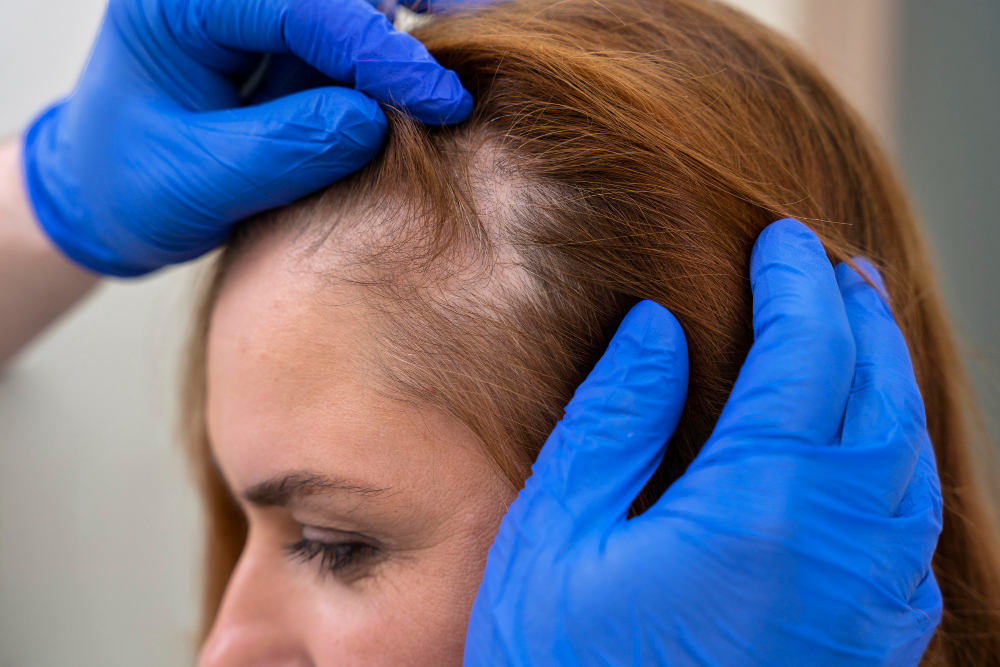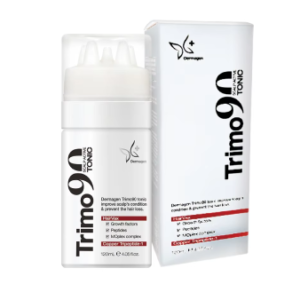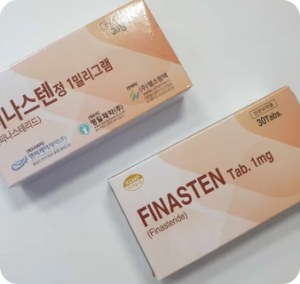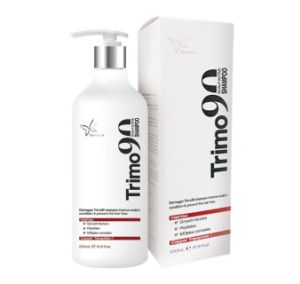Hair Thinning in Women: Treatments That Actually Work

Finding more hair in your brush than on your head is a frustrating and emotionally draining experience for millions of women. You are not alone. Hair thinning and loss (also known as female pattern hair loss or androgenetic alopecia) is far more common than we talk about, affecting nearly 50% of women by age 50.
The good news? While there is no magical overnight cure, there are scientifically-backed and effective treatments that can help you regain control, improve your hair’s health, and boost your confidence. Let’s move beyond the hype and focus on what truly works.
First, Understand Why You Lose Hair
Before diving into treatments, it’s crucial to identify the potential cause. Hair thinning in women can be triggered by:
- Female‑pattern hair loss (FPHL)miniaturizes hair follicles over time, often visible as a widening part or diffuse thinning on the crown. Without treatment, it tends to progress.
- Telogen effluvium (TE) causes sudden shedding 2–4 months after a “shock” (illness, surgery, severe stress, childbirth). TE usually improves once the trigger resolves; rule out iron/thyroid issues.
- Postpartum shedding often peaks 4 months after delivery and settles by 6–12 months. If density isn’t normal by 1 year, get evaluated.
- Traction alopecia and CCCA (a scarring form) are more common with tight hairstyles and can become permanent. Early, gentle hair care is critical.
Treatments That Actually Work
Step one is always to consult a dermatologist or trichologist. They can help pinpoint the root cause and create a targeted plan. Treatments that are usually prescribed by doctors are;
- The Gold-Standard Topical Treatment: Minoxidil
How it works: Minoxidil (commonly known as Rogaine) is an FDA-approved over-the-counter treatment. It works by prolonging the growth phase of the hair follicles, stimulating blood flow to the scalp, and waking up shrunken follicles.
What to expect: It’s available in 2% and 5% solutions or foams. Be patient—results can take at least 6 months of consistent, daily use. A common initial side effect is a temporary “dread shed,” which is actually a sign that it’s working, making way for new, stronger growth.
- Nutritional Support: Feeding Your Follicles
You cannot out-treat a bad diet. Supplements can be powerful allies, especially if you have deficiencies.
- Iron: A key ferritin (stored iron) level is essential for hair growth. Ask your doctor to test your levels.
- Viviscal: This popular supplement contains a proprietary marine complex, vitamin C, and biotin. Clinical studies have shown it can promote growth in women with temporary thinning.
- Collagen Peptides: Collagen provides the amino acids that are the building blocks of keratin, the protein that makes up hair.
- Low-Level Laser Light Therapy (LLLT)
How it works: Devices like laser caps, helmets, and combs emit cool lasers that stimulate cellular activity in the follicles (a process called photobiomodulation). This increases energy production and can reverse the miniaturization process in follicles.
- The Verdict: FDA-cleared for both men and women, LLLT is a safe, non-invasive treatment. Studies show it can improve hair density and count, especially when used consistently as part of a routine. It’s a great option for those seeking a drug-free approach.
- Prescription Options: Spironolactone
For women with androgenetic alopecia linked to hormonal sensitivity, dermatologists may prescribe Spironolactone. This oral medication is a diuretic that also acts as an anti-androgen, blocking the hormones that can cause follicles to shrink. This is a prescription-only medication and requires medical supervision.
Special Notes for Different Situations
- Postpartum: Shedding peaks around 4 months and typically improves by 6–12 months. Gentle care + nutrition; see a dermatologist if density hasn’t recovered by 1 year.
- Tight hairstyles / protective styles: Reduce tension to prevent traction alopecia; once scarring occurs, regrowth is harder.
- Scalp conditions (dandruff/seb derm): Treating inflammation (e.g., ketoconazole shampoo) can make a visible difference alongside growth therapies.
What You Can Do to Avoid Hair Thinning?
The most effective approach is often a multi-faceted one. Here’s how to combine these elements:
- Diagnose: See a doctor to rule out underlying medical conditions.
- Nourish from Within: Incorporate a high-quality supplement based on your needs (e.g., Viviscal, Collagen, or a targeted formula like Eidin’s internal supplements).
- Stimulate Topically: Commit to a consistent topical regimen, whether it’s minoxidil, a peptide-rich serum, or both.
- Protect and Be Gentle: Use a gentle shampoo, avoid high heat, and opt for loose hairstyles. Silk pillowcases can also reduce friction and breakage.
- Manage Stress: Incorporate stress-reducing practices like yoga, meditation, or walking. Your hair (and your mind) will thank you.
The Bottom Line
Dealing with hair thinning is a marathon, not a sprint. There is no single “best” treatment for everyone, but by understanding the science and combining evidence-based approaches, from medical treatments like minoxidil to nutraceutical support and advanced cosmetics, you can build a powerful, personalized strategy. With patience, consistency, and the right guidance, healthier, fuller hair is an achievable goal.
Supportive Care on Eidin Beauty Essence
If you’re pairing a medical plan with supportive hair care, Eidin Beauty Essence’s philosophy centers on nutraceutical-grade supplements designed to address hair health from within. Our formulations aim to provide the “essential building blocks your body needs to support thicker, stronger, and healthier hair growth,” emphasizing the importance of bioavailability and purity in their ingredients. Call us to get a quote at 224-228-3108. You can also email us at Quotes@eidinbeautyessence.xyz



